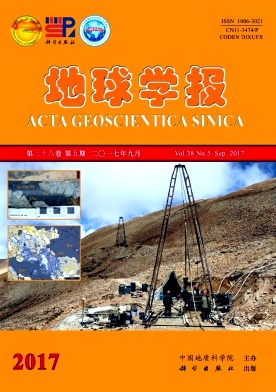WANG Yong, WANG Li-qiang, DANZHEN Wang-xiu, LI Zhuang, LI Shen. The Discovery of Late Jurassic Rhyolite Porphyry in Geji Area, Southern Bangong Co–Nujiang Suture Zone, Tibet: Constraints from Zircon U-Pb Geochronology, Geochemistry and Hf Isotopes[J]. Acta Geoscientica Sinica, 2017, (5): 723-733. doi: 10.3975/cagsb.2017.05.12
| Citation: |
WANG Yong, WANG Li-qiang, DANZHEN Wang-xiu, LI Zhuang, LI Shen. The Discovery of Late Jurassic Rhyolite Porphyry in Geji Area, Southern Bangong Co–Nujiang Suture Zone, Tibet: Constraints from Zircon U-Pb Geochronology, Geochemistry and Hf Isotopes[J]. Acta Geoscientica Sinica, 2017, (5): 723-733. doi: 10.3975/cagsb.2017.05.12
|
The Discovery of Late Jurassic Rhyolite Porphyry in Geji Area, Southern Bangong Co–Nujiang Suture Zone, Tibet: Constraints from Zircon U-Pb Geochronology, Geochemistry and Hf Isotopes
-
Abstract
Zircon U-Pb age, geochemistry and zircon Hf isotopes of the Naibuzhakangba rhyolite porphyry in Geji area of Tibet are reported in this study. LA-ICP-MS zircon U-Pb dating indicates that the Naibuzhakangba rhyolite porphyry was emplaced at (151.6±1.2) Ma (MSWD=0.9). Geochemical data show that the rhyolite porphyry rocks are weakly peraluminous and have high content of SiO2 (73.93%~74.71%) and Na2O+K2O (6.73%~7.30%), and low content of TFe and MgO, belonging to high-K calc-alkaline series. These rhyoliteporphyry rocks are enriched in LREE and show obvious negative Eu anomalies in the chondrite-normalizeddiagram and significant negative Nb, Ta, Ti and P anomalies in the primary mantle-normalized diagram. Theserocks have LREE/HREE ratios of 9.71~12.38, (La/Yb)N values of 10.64~14.42, and δEu values of 0.65~0.73. Therhyolite porphyry rocks have geochemical features of subduction-related I-type granitoids and have negativezircon εHf(t) values (–3.1 on average). The wide range of zircon εHf(t) values (up to 11ε units) indicates that therhyolite porphyry has a mixture source region. Hf isotopes and whole-rock Zr saturation temperature of theserocks (750~791℃) indicates that the mantle magma played an important role in the formation of the parentmagma. In combination with the regional geology, the results obtained by the authors indicate that the rhyoliteporphyry was formed in the southward subduction setting of the Slainajap Ocean. Thus, the mantle-derivedmagma provided the heat and materials for the partial melting of ancient mafic lower crust and was mixed with it,and then the mixed magma moved upward and experienced the fractional crystallization process to form theNaibuzhakangba rhyolite porphyry.
-

-
-
Access History







 DownLoad:
DownLoad: